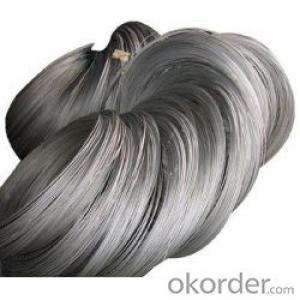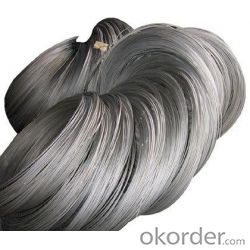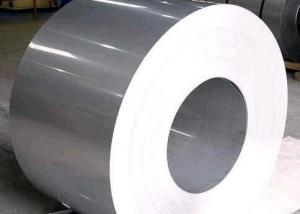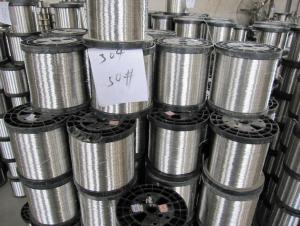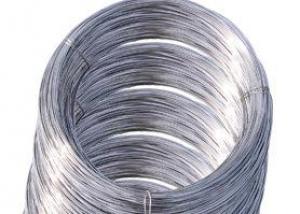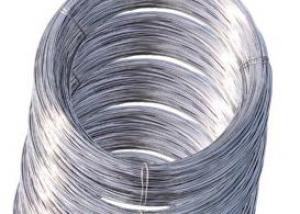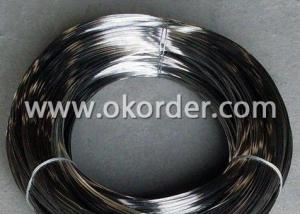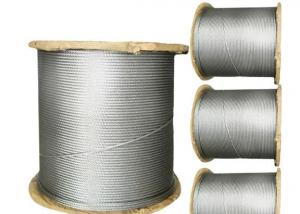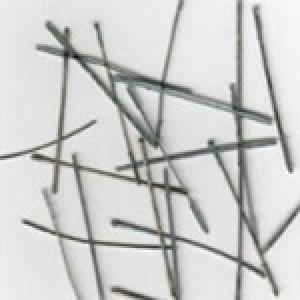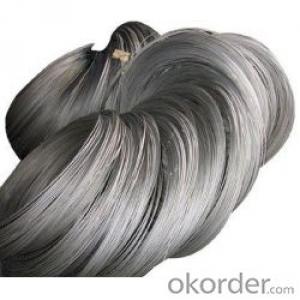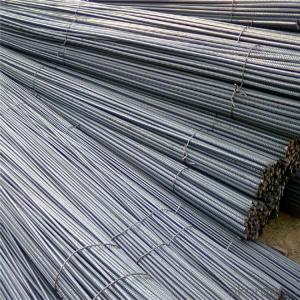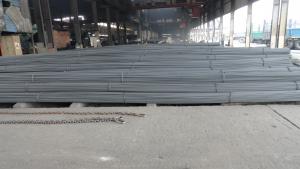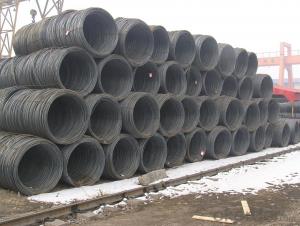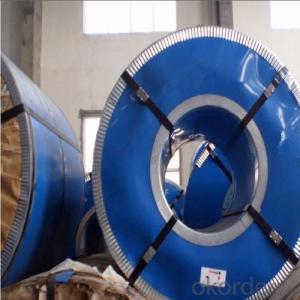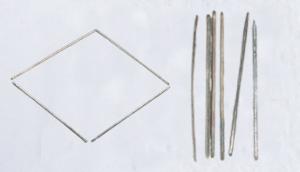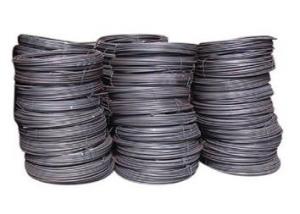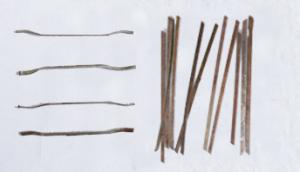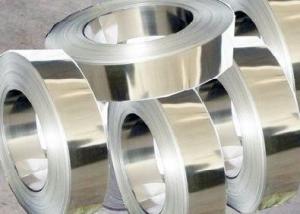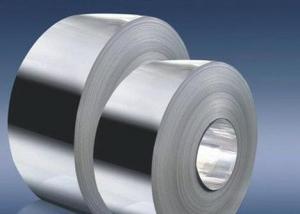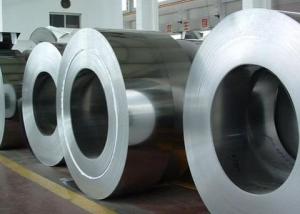Hot Rolled Reinforcing Steel Bar in Coil
- Loading Port:
- Tianjin
- Payment Terms:
- TT OR LC
- Min Order Qty:
- 100 m.t.
- Supply Capability:
- 5000 m.t./month
OKorder Service Pledge
OKorder Financial Service
You Might Also Like
Hot Rolled Reinforcing Steel Bar in Coil
Main Structure of Reinforcing Steel Bar in Coil
Standard: AISI, ASTM, BS, DIN, GB, JIS, ASTM
Grade: HRB400
Diameter: 6mm-15mm
Length: in coil
Type: steel rod price
Size: 6.5mm-10mm
Technique: hot rolled
Packing: in coil
Chemical Composition: C, Si, Mn, P, S, (B)(Cr)
Shape: round
Secondary Or Not: Non-secondary
Quality: prime quality
Main Features of Reinforcing Steel Bar in Coil
Type | Deformed Steel Bar/ Hot Rolled Ribbed Bar/ Steel Rebar |
Standard grade | GB ( HRB 400/ HRB500) BS4449-1997(460B) BS4449-2005(B500B) KS SD400/500
ASTM A 615 (GR40/GR60) |
Shape | Ribbed bars |
Quality | Prime quality |
Technique | Hot rolled |
Size of diameter | 5.5-40mm, as requested |
Length | 6~12m, as requested |
Delivery time | 10-30 days, according to the quantity |
Note | Customized service is available (for diameter, length and chemical components etc.). |
Our Services
1. Offer customers 24/7 service, whenever you need us, we are always here for you.
2. Immediate response. Your any inquiry will be replied within 24 hours.
3. Support small order quantity. For the first time cooperation customers, we can send you less quantity for trial order.
4. Support third party inspection company to inspect and check quality and quantity before delivery.
FAQ:
Q:How about your quality?
A:Quality is our culture, our products has to be checked with engineer, QC and sales, customer together, The products’ qualified rate need to be over 95%.
Picture:
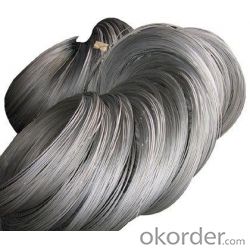

.
- Q: Can stainless steel wire be used for wire screens?
- Yes, stainless steel wire can be used for wire screens. Stainless steel wire is commonly used for making wire screens due to its corrosion resistance, durability, and strength. It is ideal for applications that require resistance to rust and corrosion, making it suitable for use in outdoor environments or in industries where exposure to moisture, chemicals, or high temperatures is common. Stainless steel wire screens are commonly used in various industries such as mining, agriculture, construction, and food processing, where they are used for filtering, separating, or protecting materials.
- Q: What are the environmental benefits of using stainless steel wire?
- The utilization of stainless steel wire brings forth numerous environmental advantages. To begin with, stainless steel wire is an exceptionally durable and long-lasting material. As a result, products manufactured with stainless steel wire possess a longer lifespan compared to those made from alternative materials. Consequently, the necessity for frequent replacements and disposal of products is diminished. This aids in the reduction of waste generation and alleviates the burden on landfills. Furthermore, stainless steel wire exhibits resistance to corrosion, enabling it to endure harsh environmental conditions without deteriorating. As a result, products created with stainless steel wire necessitate less maintenance and repair, leading to a decreased requirement for additional resources and energy consumption. Additionally, stainless steel wire is recyclable. When it reaches the end of its lifespan, stainless steel wire can be effortlessly reclaimed and recycled into new products without compromising its properties. This diminishes the demand for fresh raw materials and the energy required for their extraction and processing. By selecting stainless steel wire, we can contribute to the circular economy and foster sustainable resource management. Moreover, stainless steel wire is resilient to heat and chemicals, making it an ideal choice for various applications in industries such as construction, automotive, and marine. By employing stainless steel wire in these sectors, we can minimize the use of other materials that may have a more substantial environmental impact. Finally, stainless steel wire is non-toxic and does not release harmful substances into the environment. This renders it a safe option for applications involving contact with food, water, or other sensitive environments. In conclusion, the utilization of stainless steel wire presents numerous environmental benefits. Its durability, corrosion resistance, recyclability, and non-toxic nature contribute to reduced waste generation, decreased energy consumption, and sustainable resource management. By opting for stainless steel wire, we can make a positive impact on the environment and promote a more sustainable future.
- Q: Can stainless steel wire be used for structural applications?
- Yes, stainless steel wire can be used for structural applications. Stainless steel is known for its durability, strength, and resistance to corrosion, making it an excellent choice for structural applications where strength and longevity are important. Stainless steel wire can be used in a variety of structural applications such as bridges, buildings, and other infrastructure projects. Its high tensile strength allows it to withstand heavy loads and its resistance to corrosion ensures its longevity even in harsh environments. Additionally, stainless steel wire can be easily fabricated and welded, making it a versatile material for structural applications.
- Q: Is stainless steel wire resistant to UV radiation?
- Yes, stainless steel wire is generally resistant to UV radiation.
- Q: What are the different wire mesh options available in stainless steel wire?
- There are several different wire mesh options available in stainless steel wire, each with its own unique features and applications. 1. Plain Weave: This is the most common and basic type of stainless steel wire mesh. It is made by weaving the wires under and over each other in a simple crisscross pattern, resulting in a strong and durable mesh. Plain weave wire mesh is widely used in filtration, sieving, and screening applications. 2. Twill Weave: Twill weave wire mesh is characterized by a diagonal pattern created by passing the weft wire over and under two warp wires. This type of mesh offers a tighter weave and increased strength compared to plain weave. Twill weave wire mesh is commonly used in industrial filtration, separation, and conveyor belt applications. 3. Dutch Weave: Dutch weave wire mesh features a combination of a plain weave and a twill weave. It is made by using thick wires for the warp and thin wires for the weft, resulting in a highly durable and fine mesh. Dutch weave wire mesh is ideal for applications that require precise filtration and separation, such as in the chemical, pharmaceutical, and food industries. 4. Welded Wire Mesh: As the name suggests, welded wire mesh is made by welding the intersections of the wires together. This type of mesh offers excellent strength and rigidity, making it suitable for applications that require a strong barrier or reinforcement, such as in construction, fencing, and animal enclosures. 5. Reverse Dutch Weave: Reverse Dutch weave wire mesh is similar to Dutch weave, but the warp wires are thicker than the weft wires. This type of mesh is frequently used for high-pressure filtration applications, as the thicker warp wires provide greater stability and resistance to pressure. 6. Crimped Wire Mesh: Crimped wire mesh is made by weaving wires with crimped patterns, creating a mesh with uniform openings. This type of mesh is known for its flexibility and resilience, making it suitable for applications that require vibration resistance, such as in mining, construction, and architecture. These are just a few of the many wire mesh options available in stainless steel wire. The choice of mesh depends on the specific requirements of the application, such as filtration precision, strength, flexibility, and durability.
- Q: Can stainless steel wire be easily welded?
- Yes, stainless steel wire can be easily welded. It has excellent weldability due to its low thermal conductivity and high melting point, allowing for smooth and efficient welding processes.
- Q: Can stainless steel wire be supplied in wooden reels?
- Certainly! Stainless steel wire can indeed be provided on wooden reels. It is a usual practice to employ wooden reels for the packaging and transportation of diverse wire assortments, such as stainless steel wire. These wooden reels offer a robust and enduring enclosure for the wire, shielding it from harm throughout the process of shipping and handling. Furthermore, the wood utilized in these reels is typically treated to impede moisture absorption, thereby guaranteeing the wire's sustained quality.
- Q: Why does stainless steel have magnetism?
- In addition, austenitic stainless steel wire containing magnetic, is related to its processing technology, austenitic stainless steel raw materials are non-magnetic, but after processing, some finished products will have a weak magnetic.
- Q: 443 short silk hairline stainless steel 443 what does that mean?
- 443 stainless steel is a ferritic stainless steel is now generally used to replace 304, rust resistance and processing performance and is 304, the comprehensive promotion in electrical appliances, utensils, kitchen equipment, elevator, oven manufacture etc..
- Q: What are the different wire surface finishes available for stainless steel wire?
- Some of the different wire surface finishes available for stainless steel wire include bright annealed, matte finish, pickled, passivated, and electro-polished.
Send your message to us
Hot Rolled Reinforcing Steel Bar in Coil
- Loading Port:
- Tianjin
- Payment Terms:
- TT OR LC
- Min Order Qty:
- 100 m.t.
- Supply Capability:
- 5000 m.t./month
OKorder Service Pledge
OKorder Financial Service
Similar products
Hot products
Hot Searches
Related keywords

